Electricity and domotics Electric cables
()Sort by
-

Edm Flat Hose Roll 2x1.5 mm 10 m
10.99 €
-

Edm Flexible Cable Roll 1.5 mm 25 m
10.99 €
-
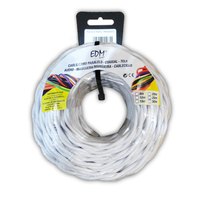
Edm Braided Textile Parallel Roll 2x2.5 mm 5 m
17.99 €
-
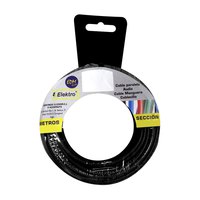
Edm Flexible Cable Roll 2.5 mm 50 m
28.99 €
-

Edm Flexible Cable Roll 4 mm 15 m
13.99 €
-
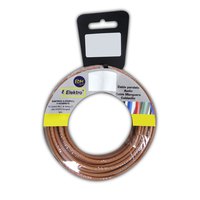
Edm Flexible Cable Roll 6 mm 25 m
33.49 €
-

Edm Parallel Roll 2x1 mm 10 m
6.99 €
-

Edm Parallel Roll 2x1.5 mm 25 m
18.49 €
-
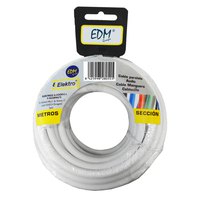
Edm Parallel Roll 2x1.5 mm 50 m
37.99 €
-

Edm Braided Textile Parallel Roll 3x2.5 mm 5 m
22.99 €
-

Edm C-18 Braided Textile Cable Roll 2x0.75 mm 5 m
8.99 €
-

Edm Braided Textile Parallel Roll 2x1 mm 25 m
43.99 €
-

Edm Flexible Cable Roll 2.5 mm 20 m
12.99 €
-

Edm Flexible Cable Roll 4 mm 15 m
13.99 €
-

Edm Flexible Cable Roll 6 mm 25 m
33.49 €
-

Edm Tubular Hose Roll 3x2.5 mm 15 m
29.99 €
-

Edm 48514 Cable Pulling Probe 25 m
28.49 €
-

Edm 48504 Cable Pulling Probe 25 m
4.99 €
-

Edm Flexible Cable Roll 2.5 mm 50 m Refurbished
21.49 €
-

Edm Flexible Cable Roll 2.5 mm 25 m
15.99 €
-

Edm Flexible Cable Roll 6 mm 25 m
33.49 €
-

Edm Flexible Cable Roll 6 mm 25 m
33.49 €
-

Creative Cables Creative Flex Tube RN06 90 cm Cable
25.99 €
-

Edm Fishing Net 2x1.5 mm 15 m
17.99 €
-
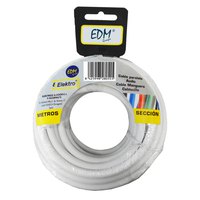
Edm Flat Hose Roll 2x0.75 mm 10 m
7.49 €
-

Edm Flexible Cable Roll 1.5 mm 10 m
5.49 €
-

Edm Flexible Cable Roll 2.5 mm 10 m
6.99 €
-

Edm Roll Cable 1.5 mm 30 m
11.99 €
-

Edm 48512 Cable Pulling Probe 15 m
15.99 €
-
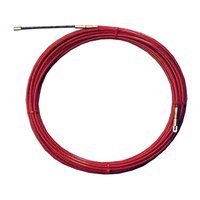
Edm 48515 Cable Pulling Probe 30 m
29.99 €
-
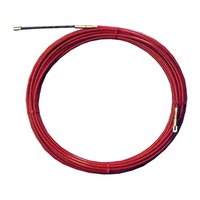
Edm 48513 Cable Pulling Probe 20 m
20.49 €
-

Edm Braided Textile Parallel Roll 3x1 mm 5 m
14.99 €
-

Edm Braided Textile Parallel Roll 3x1.5 mm 25 m
77.99 €
-

Edm Braided Textile Parallel Roll 3x1.5 mm 25 m
77.99 €
-

Edm Braided Textile Parallel Roll 3x2.5 mm 25 m
109.99 €
-

Edm C-01 Braided Textile Cable Roll 2x0.75 mm 5 m
10 €
-

Edm C-15 Braided Textile Cable Roll 2x0.75 mm 5 m
10 €
-

Edm C-20 Braided Textile Cable Roll 2x0.75 mm 5 m
10 €
-

Edm C-41 Braided Textile Cable Roll 2x0.75 mm 5 m
10 €
-

Edm C-45 Braided Textile Cable Roll 2x0.75 mm 5 m
10 €
-

Edm C-62 Braided Textile Cable Roll 2x0.75 mm 5 m
10 €
-

Edm C-63 Braided Textile Cable Roll 2x0.75 mm 5 m
10 €
-

Edm C-75 Braided Textile Cable Roll 2x0.75 mm 5 m
10 €
-

Edm C01 Cable Cordon Tubulaire Roll 2x0.75 mm 5 m
10 €
-

Edm C12 Cable Cordon Tubulaire Roll 2x0.75 mm 5 m
10 €
-

Edm C20 Cable Cordon Tubulaire Roll 2x0.75 mm 5 m
10 €
-

Edm C45 Cable Cordon Tubulaire Roll 2x0.75 mm 5 m
10 €
-

Edm C68 Cable Cordon Tubulaire Roll 2x0.75 mm 5 m
10 €
-

Edm Cable Cordon Tubulaire Roll 2x0.75 mm 5 m
10 €
-

Edm Cable Cordon Tubulaire Roll 2x0.75 mm 5 m
10 €
-

Edm Coil Cable 1.5 mm 1200 m
494.99 €
-

Edm Fishing Net 2x1 mm 10 m
8.99 €
-
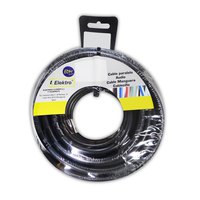
Edm Fishing Net 2x1 mm 15 m
11.99 €
-

Edm Fishing Net 2x1 mm 5 m
4.99 €
-
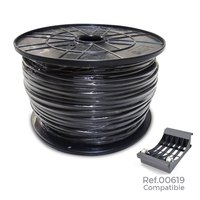
Edm Acrylic Hose Coil 1KW 2x1 mm 400 m
334.99 €
-

Edm Acrylic Hose Coil 1KW 2x1.5 mm 200 m
244.49 €
-
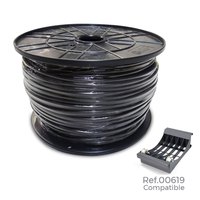
Edm Acrylic Hose Coil 1KW 3x1 mm 300 m
285.49 €
-

Edm Acrylic Hose Coil 5x1.5 mm 100 m
266.99 €
-

Edm Braided Textile Cable Roll 2x0.75 mm 5 m
10 €
-
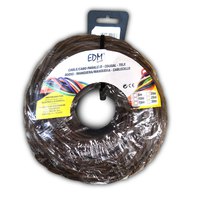
Edm Braided Textile Parallel Roll 2x1 mm 5 m
11.49 €
-

Edm Braided Textile Parallel Roll 2x1 mm 5 m
11.49 €
-

Edm Braided Textile Parallel Roll 2x1.5 mm 25 m
55.99 €
-

Edm Braided Textile Parallel Roll 2x1.5 mm 5 m
13.99 €
-

Edm Braided Textile Parallel Roll 2x2.5 mm 25 m
75.49 €
-

Edm Braided Textile Parallel Roll 3x1 mm 25 m
62.99 €
-

Edm Flexible Cable Roll 1.5 mm 15 m
6.99 €
-
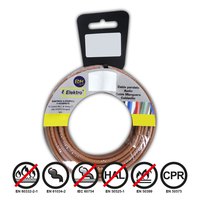
Edm Flexible Cable Roll 1.5 mm 20 m
8.49 €
-

Edm Flexible Cable Roll 1.5 mm 20 m
8.49 €
-

Edm Flexible Cable Roll 1.5 mm 25 m
9.99 €
-
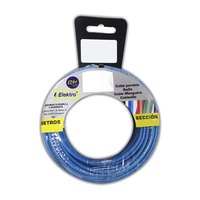
Edm Flexible Cable Roll 1.5 mm 5 m
3.49 €
-
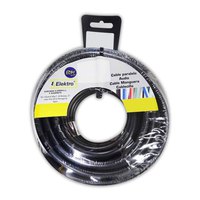
Edm Flexible Cable Roll 1.5 mm 50 m
17.99 €
-

Edm Flexible Cable Roll 1.5 mm 50 m
17.99 €
-
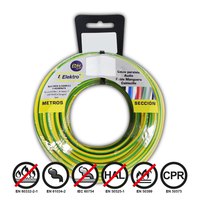
Edm Flexible Cable Roll 2.5 mm 20 m
12.49 €
-
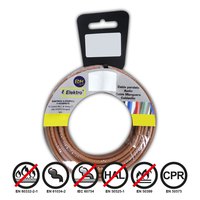
Edm Flexible Cable Roll 2.5 mm 25 m
14.99 €
-
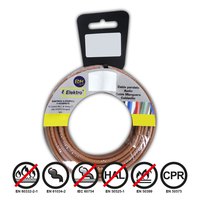
Edm Flexible Cable Roll 2.5 mm 5 m
4.99 €
-

Edm Flexible Cable Roll 2.5 mm 5 m
4.49 €
-

Edm Flexible Cable Roll 2.5 mm 5 m
3.99 €
-

Edm Flexible Cable Roll 2.5 mm 50 m
27.99 €
-

Edm Flexible Cable Roll 2.5 mm 50 m
27.99 €
-

Edm Flexible Cable Roll 2.5 mm 50 m
27.99 €
-
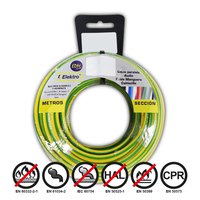
Edm Flexible Cable Roll 4 mm 20 m
17.99 €
-
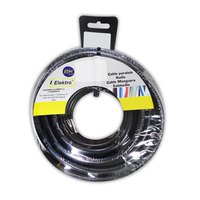
Edm Fishing Net 2x1.5 mm 25 m
28.99 €
-
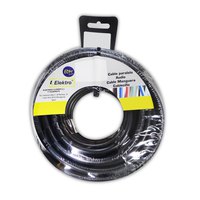
Edm Fishing Net 3x1 mm 10 m
10.99 €
-
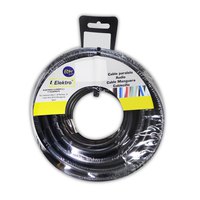
Edm Fishing Net 3x1 mm 15 m
15.49 €
-
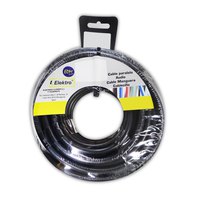
Edm Fishing Net 3x1 mm 5 m
6.49 €
-

Edm Fishing Net 3x1 mm 50 m
46.99 €
-

Edm Fishing Net 3x1.5 mm 25 m
36.49 €
-
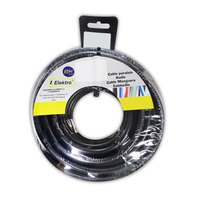
Edm Fishing Net 3x1.5 mm 5 m
8.99 €
-
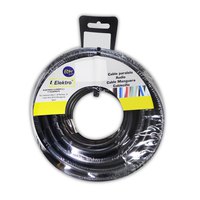
Edm Fishing Net 3x2.5 mm 15 m
32.99 €
-

Edm Flexible Cable Roll 4 mm 25 m
22.49 €
-
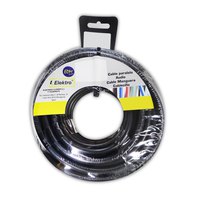
Edm Fishing Net 4x2.5 mm 15 m
47.49 €
-
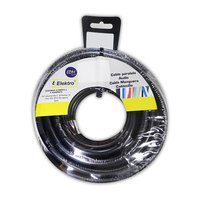
Edm Flexible Cable Roll 4 mm 5 m
5.99 €
-

Edm Fishing Net 4x2.5 mm 5 m
16.99 €
-

Edm Flexible Cable Roll 4 mm 5 m
5.99 €
-

Edm Fishing Net 5x2.5 mm 10 m
33.99 €
-
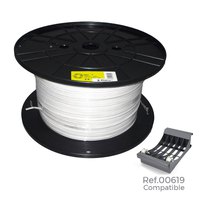
Edm Flat Hose Coil 3x1.5 mm 250 m
398.99 €
What are electric cables?
Electric cables are an essential component of electrical systems that are used to transmit electrical power and signals from one point to another. These cables are made up of one or multiple conductors enclosed within an insulating sheath or jacket. Here are some key points about electric cables:Conductors: The conductors in electric cables are typically made of copper or aluminum, chosen for their excellent electrical conductivity. These conductors carry the electrical current from the power source to the destination, such as appliances, lights, or electrical devices.
Insulation: Electric cables feature insulation materials that surround and protect the conductors. The insulation prevents the conductors from coming into contact with each other or with external objects, preventing electrical short circuits and ensuring safety. There are various types of electric cables designed for specific applications.
Cable size and capacity: Electric cables come in different sizes of gauges, which determine their current carrying capacity. The size of the cable is chosen based on the anticipated electrical load and the length of the cable run. It is important to select the appropriate cable size to ensure efficient power transmission and avoid overheating.
Voltage rating: Electric cables are also rated for specific voltage levels to match the electrical system´s requirements. Common voltage ratings include 120V, 240V, and higher voltage levels for industrial applications. It is crucial to use cables with the correct voltage rating to maintain safety and prevent electrical breakdown.
Installation and wiring: Proper installation and wiring practices are important for the safe and effective use of electric cables. Cables should be installed according to electrical codes and guidelines, ensuring proper grounding, securing, and protection against mechanical damage.
Maintenance and safety: Regular inspection and maintenance of electric cables are essential to identify any signs of wear, damage, or insulation deterioration. It is important to follow safety precautions, such as avoiding overloading cables, using appropriate cable protection, and avoiding exposure to moisture or extreme temperatures.
Electric cables form the backbone of electrical systems, allowing for the transmission of power and signals in various applications. Understanding the different types, sizes, and installation practices ensures the safe and efficient operation of electrical systems in homes, buildings, and industries.
A parallel roll is used for rolling the electric cables on it and it is a circular, drum shaped item such as a spool utilized to hold different kinds of electrical cables. The parallel roll which can also be termed a drum has been utilized for many years to carry electric cables, and wire products.
The cable cordon tubulaire roll is foldable and smooth, a fundamental cable used for many purposes. It has some intrinsic traits which create it the perfect option for a scope of various uses. It provides insulation, stability, and safety at a broad range of functioning temperatures. You can buy these cable rolls from the brands such as Edm, Oem, Famatel, Filgraf, and Electraline.

























